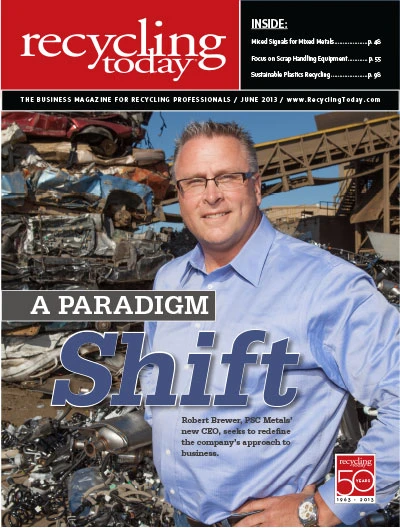
Making Headlines in 1983...
Feb. 28: The Final Episode of M*A*S*H Airs and Sets a U.S. Television Ratings Record
Sept. 1: 269 People Die When a Korean Air Lines Flight is Shot Down by a Soviet Jet
Oct. 23: Attacks in Beirut Kill 241 American and 58 French Military Personnel
Oct. 25: U.S. Troops Invade the Caribbean Island Nation of Grenada
 Business Trends
Business Trends
Paying Attention to Plastic
One of the most long-lasting and successful plastics recycling companies in the U.S. started in 1983 when Denton Plastics was formed in Oregon.
Company founder Dennis Denton spent two years with another recycling company before starting out as a plastic scrap broker and then embarking on processing operations.
The company initiated a number of methods to capture material, such as collecting HDPE (high-density polyethylene), LDPE (low-density polyethylene) and polystyrene from grocery stores.
“We had milk jug contests at grade schools,” says Denton.
Industry Leaders
Combined Effort
As of 2013, the Institute of Scrap Recycling Industries Inc. (ISRI) represents more than 1,600 scrap companies operating at more than 6,000 facilities in the United States and 30 countries. The Washington, D.C.-based organization was formed when two precursor groups—ISIS and NARI—combined in 1987.
ISIS (the Institute of Scrap Iron and Steel) was formed in 1928 to represent ferrous scrap dealers and brokers. NARI (the National Association of Recycling Industries) evolved from two earlier groups: the National Association of Waste Material Dealers and the National Association of Secondary Material Industries.
After sometimes tense negotiations, ISIS and NARI combined to form ISRI in June of 1987 with Richard Abrams, current chairman of Consolidated Scrap Resources, York, Pa., as its first president. The first ISRI convention was held in January 1988.
 Municipal Recycling
Municipal Recycling
Thinking Big
Rhode Island is the smallest state by area in the U.S., but it was the first state to think big in terms of post-consumer household recycling.
In 1986, Rhode Island’s “Hazardous Waste Reduction, Recycling and Treatment Research and Demonstration Act of 1986” spelled out the first statewide goals for the recycling of aluminum and steel cans, glass, newspapers and No. 1 and No. 2 plastic bottles and jugs. The state’s legislature set ambitious aims, targeting 70 percent recycling rate goals for these items, many of which were still commonly disposed of in 1986.
Much of the material collected in the state has subsequently been directed to the Rhode Island Resource Recover Corp. (RIRRC), Johnston, R.I. Some 175 trucks per day stream into the RIRRC’s Johnston material recovery facility (MRF), which became a single-stream MRF in 2012. The retrofit brought the processing capacity of the Johnston MRF to 50 tons per hour.
In 2010, RIRRC says it recycled 53,000 tons of paper and nearly 28,000 tons of metal and plastic containers and other materials that passed through its MRF.

Explore the June 2013 Issue
Check out more from this issue and find your next story to read.
Latest from Recycling Today
- Aqua Metals secures $1.5M loan, reports operational strides
- AF&PA urges veto of NY bill
- Aluminum Association includes recycling among 2025 policy priorities
- AISI applauds waterways spending bill
- Lux Research questions hydrogen’s transportation role
- Sonoco selling thermoformed, flexible packaging business to Toppan for $1.8B
- ReMA offers Superfund informational reports
- Hyster-Yale commits to US production





